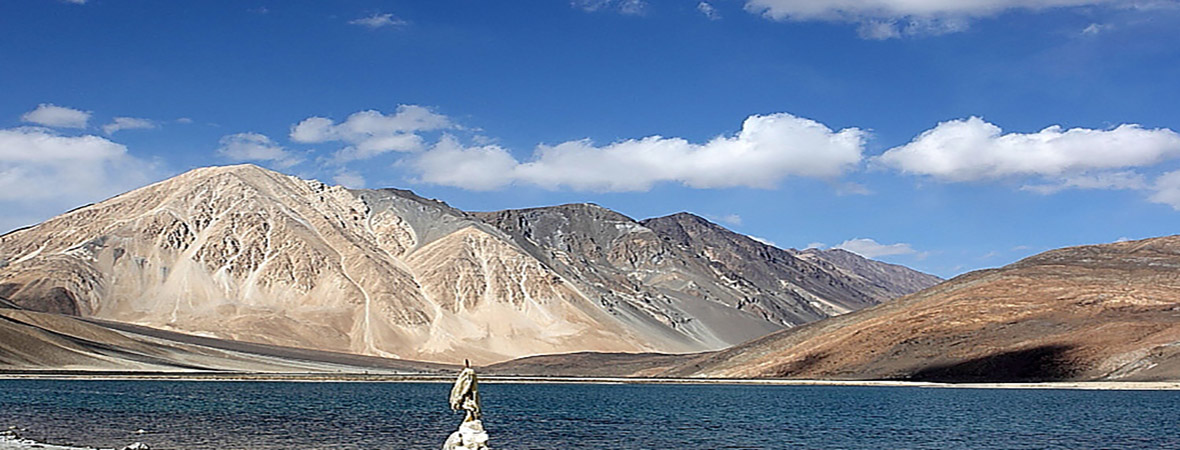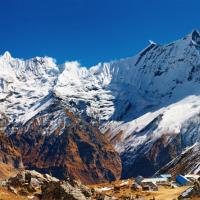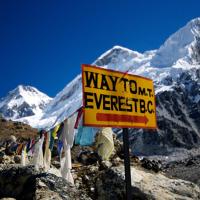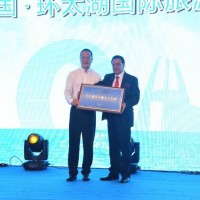LADAKH CULTURAL TREK
Ladakh Cultural Trek is the key to traverse the Ladakh region in the Indian Himalaya. This particular trek allows trekkers to get acquainted with the pristine and utterly conserved Tibetan culture alongside all of its authentic traditions of the ancient times. Often known as Little Tibet in India, Ladakh flaunts aesthetically picturesque landscape positioned at higher elevations, which mainly comprises barren lands i.e. as dry as a bone. Although these lands lack the moisture, they are prettified by unreliably built monasteries circumscribed by the mighty Himalayas and the Karakoram, two of the majestic mountain ranges in the entire planet. Regardless of fact that you’ll be standing on the Indian soil while traversing Ladakh, you’ll witness real Tibetan culture which will definitely baffle you at some point. Furthermore, snow-clad peaks, rugged grounds, fluttering prayer flags, and high mountain passes are other features of this remarkable Himalayan region.
Ladakh harbours the largest assemblage of Buddhist monasteries (Vajrayana), gompas, and chortens outside the Tibet itself, which is also one of the main attractions of this sublime lands that tempt thousands of tourist to visit this arid region in search of ancient settlements and deep spirituality.
This trip combines the Indus Valley Odyssey with a 10-day trek in the Markha Valley. Beginning from Stok Palace, the trek progresses through narrow canyons and Shingo Valley then traverses Gandha La (16,500ft) into the Valley of Markha in the end. Explore the enchanting high altitude city of Leh as well as the lovely Temisgam and Rumbak Village. Further, be amazed from the Lamayuru Monastery, one of the most sacred and oldest in the region. Also, gaze the beauty of Hemishakpatchan village and Ridzong Monastery. Discover first-rate religious artistic works of the Himalayas at the Alchi Monastery, the centre displaying Ladakh's glorious past.
Detail Itinerary
Day 1 - Delhi/Leh
Fly from Delhi to Leh, the capital of Ladakh and situated among the hills on the north side of the Indus Valley. Upon arrival, you will be met by your guide and transferred to your hotel to begin your adaptation to the high altitude. You will have an afternoon orientation with your guide.
Day 2 - Temisgam
Drive to Temisgam (4 hours), one of our favorite villages in Ladakh. You will find your camp set up in a beautiful apricot grove beneath an ancient palace and monastery with a cold rushing stream nearby. Off the main roads and trails, this village is seldom visited by Westerners and you will have several days to explore the extensive fields and villages. You may even be invited into several houses for tea or local beer called chang. The climb to the monastery and old palace, as well as the nights here at 10,000′ elevation, will aid in your acclimatization. The trip continues to become more remarkable for the cultural experience that unfolds. You have the sense that your long journey to Asia, over the Himalayas and onto the Tibetan Plateau has taken you to a place so beautiful, remote and pure, that the effort has been worth it.
Meals: Breakfast, Lunch, Dinner
Day 3 - Temisgam/Lamayuru/Temisgam
Make the exciting trip to the ancient Lamayuru Monastery and spend time exploring the extensive buildings of this ancient Buddhist sanctuary. This extraordinary gompa is perched on top of a beautifully eroded crag, complete with rock pinnacles and caves above the Indus. Return to Temisgam for your overnight.
Meals: Breakfast, Lunch, Dinner
Day 4 - Temisgam/Hemishakpatchan
After breakfast, drive to Hemishakpatchan via Saspol Village. This is the home village of many of our staff, and they will certainly invite you to visit their families and homes. There is a very interesting monastery and participants on JOURNEYS treks have started a public library at the monastery and built a nunnery as well. We also support other ongoing projects through our Earth Preservation Fund, such as the large water-driven prayer wheel restored through the contributions of previous JOURNEYS travelers. There are excellent views of snowy mountains and wild sheep can usually be seen grazing on a nearby slope. As home to your guides, you will have the great experience of visiting some of their relatives homes. Overnight at the camp near the Hemis Library.
Meals: Breakfast, Lunch, Dinner
Day 5 - Hemishakpatchan/Ridzong/Chulican
Drive to Ridzong Monastery, the favorite Buddhist site of many visitors to Ladakh. You go back in time to an era when Buddhist Canons ruled the affairs of men and religious scholarship was the most important task of society. Overnight camp will be at Chulican.
Meals: Breakfast, Lunch, Dinner
Day 6 - Chulican/Alchi/Leh
Today you will drive along the Indus River to the famous monastery at Alchi. This monastery preserves some of the most spectacular Buddhist wall paintings ever created. Also visit Likkir Monastery where the monks are of Gelukpa order and the kushok is the Dalai Lama’s younger brother. Return to Leh for your overnight.
Meals: Breakfast, Lunch
Day 7 - Thikse/Hemis/Leh
Visit Thikse Monastery, the largest gompa in Ladakh that is situated on top of a craggy hill. Here you will find an important collection of Tibetan books and some excellent artwork. Afterwards, drive to Hemis and visit the gompa also known as Chang-Chub-Sam-Ling (or Lone Place of the Compassionate Person). The Hemis Gompa belongs to the Brokpa order and was founded in the early 17th century. It contains well preserved frescoes showing Kashmiri influence, as well as the largest thangka in Ladakh. Return to your hotel in Leh for your overnight.
Meals: Breakfast
Day 8 - Leh/Stok (Begin Trek)
Today you are driven to the village of Stok – the starting point of the trek. After visiting the Stok Palace, the residence of the Queen of Ladakh and a very nice museum containing some of the finest thangkha paintings in the world, you set up camp just above the village.
Meals: Breakfast, Lunch, Dinner
Day 9 - Cross Stok La
This is a tiring but exhilarating day as you walk up a spectacular high barren valley of ever-changing color; in every direction there is a stunning panorama. Giant fingers of granite hundreds of feet long and massive dunes of purple scree contrast with the deep blue skies of the Tibetan Plateau. The path then steepens and the air thins as you climb towards Stok La (14,200′). Stopping for breath, you can see right back across the Indus Valley into the Karakoram Mountains. From the top of the pass, the path leads steeply down for about an hour to your camp near Rumbak village.
Meals: Breakfast, Lunch, Dinner
Day 10 - Rumbak to Shingo
Your horsemen come from various villages along the route of the trek, so you may be able to stop in their homes for chang and other refreshments. This gives you a unique opportunity to take part in traditional village life. Moreover, all other villagers you meet are particularly friendly and welcoming because you are with their friends and relatives. It is a 90-minute walk to the next settlement, Urutse and the mountain views from here are excellent. After lunch, you set off for the Gandha La (16,500′) Pass, which is higher than the Stok La, but the trail ascends more gently. From the top, there are magnificent views across the Markha Valley into Zanskar. You camp just over the pass at Shingo.
Meals: Breakfast, Lunch, Dinner
Day 11 - Markha Valley
This is a much easier day’s walking, but no less spectacular. From the tiny hamlet of Shingo you enter a narrow gorge with almost sheer, 1,000-foot sides. This part of the trek can be extremely hot, even though for most of the day you are walking in the shade of thick scrub, something very unusual for Ladakh. Luckily, you cross and re-cross a gently flowing stream all day, so there is always a chance to take a cooling bath. The valley walls become increasingly steeper and higher, until eventually you come out at the junction of the Markha River. A ruined fort dominates one side of the valley and a huge wall of scree on the other. Down the Markha River you see the silhouettes of some of the big peaks of Zanskar. A five-minute walk takes you to the village of Skiu where you camp for the night. There will be ample time to explore the area. Walk to Kaya village known to Ladakhis for its coppersmiths and see one at work. There may be a chance to buy some items he has made, including drinking bowls, spoons, chang pots and plates. There are also two simple, but beautiful, temples here almost unknown to tourists. Those who want to do a little more walking can head northwest along a precarious path high above the valley to the very impressive confluence of the Markha and Zanskar Rivers. Otherwise, you could take a swim in the river or just lie in the sun where you camp beside the river.
Meals: Breakfast, Lunch, Dinner
Day 12 - Markha Valley
You set off up the Markha Valley, an easy walk that is gently uphill. Although the mountainsides are stark and barren, as they are throughout Ladakh, parts of the valley itself are a blaze of brilliant greens and yellows. Wherever melt water from the glaciers provides irrigation for the land, there are oases of dazzling color. The path zigzags across the river, sometimes taking you high up across the steeply-banked scree. You pass an ancient ritual site – a mass of red-painted shrines and yak horns probably dating back to the pre-Buddhist Bon period. After lunch beside the river near the small village of Chalak, you continue up the valley towards Markha. There are a number of settlements on the way, each guarded by a round stone wolf trap to protect the sheep and goats. After about 2-1/2 hours, you have to wade across the Markha River (usually about knee high) in order to reach the village of Markha itself. Markha is just a cluster of houses in a crescent shape above the river. You camp in a beautiful flat meadow beside the river.
Meals: Breakfast, Lunch, Dinner
Day 13 - Markha/Thachungchy
Markha is at about 11,800,’ so the morning walk is relatively easy going. Passing old water mills, you come into a wide open valley where again you ford the river (or be prepared to take the perilously slippery route on the scree slope above). After an hour, a little monastery appears above you, perched 500 feet up on a needle of rock. It is usually closed, though worth the climb just for the magnificent view. You stop for lunch in Hankar, the last year-round settlement in the Markha Valley. A ruined fort dominates the village from one side and on the other side the horizon is filled by the 21,000′ Kang Yase, which is where you are heading. The path gets steeper above Hankar and you walk for only about two hours before setting camp at Thachungchy (14,100′).
Meals: Breakfast, Lunch, Dinner
Day 14 - Thachungchy/Nyimaling
You will find that the walking becomes more difficult as you gain altitude, but you may find this to be the most beautiful day of the whole trip as you make your way towards the head of the valley. For much of the time, the horseshoe of Kang Yase rises above you, unbelievably close and the more you climb, the better the view into Zanskar and beyond. This really is the roof of the world. Passing an icy cold glacial lake reflecting the snowy peaks above, you arrive at Nyimaling (15,763′) by lunch time. This is the shepherds’ summer camp for the whole Markha Valley and is literally ‘the meadow of the sun.’ Very few places in the entire world have the wild beauty of Nyimaling. It is a lost world of its own and tranquil beyond words.
Meals: Breakfast, Lunch, Dinner
Day 15 - Nyimaling
Spend the day at Nyimaling where life here follows the rhythms of nature and nothing is hurried. Little children sit in the sun while their mothers beside them make cheese and butter, yaks play on the mountainside and flocks of sheep and goats sweep across the valley on their way to distant grazing lands. There are carpets of wild flowers, alpine and desert species side by side, and a great profusion of birds – from the high altitude finches to great soaring eagles. This can be a day of complete relaxation, or for the more energetic, a day to climb even higher to the ice and snow fields of Kang Yase. It is possible to reach as high as 19-20,000′ without technical skills or equipment. The views are superb as snowy peaks stretch in every direction. It is possible to see from Nanga Parbat and K-2, the second highest peak in the world, all the way to the mountains of Western China. It will be cold in the evening, but you can expect a beautiful sunrise.
Meals: Breakfast, Lunch, Dinner
Day 16 - Gongmaru Pass
Leaving Nyimaling in the early morning and crossing the Markha River for the last time, you head up towards the Gongmaru La Pass. This is the highest point of the trek at 17,052,’ but you are acclimatized by now and if anyone does have problems it will be possible to ride a horse over the pass. More likely, your conditioning will make this pass seem easier than the previous lower ones. The path on the other side drops steeply and you descend awhile before stopping for lunch. You pass through the village of Chogdo, a group of houses high above the valley floor. Again, you cross the river a number of times as the banks of the valley are too steep for a path. There are still few signs of human habitation beyond simple houses and an occasional farmer with his stock. By mid-afternoon, you have come down about 4,500′ to the village of Sumdo where you set up camp (12,150′).
Meals: Breakfast, Lunch, Dinner
Day 17 - Trek to Hemis
You will have an easy two hour walk back to the Indus Valley, where your trek ends. A private vehicle takes you twenty minutes or so to Hemis Gompa, the biggest and most important monastery in Ladakh. After lunch at the monastery, you return to your hotel in Leh.
Meals: Breakfast, Lunch
Day 18 - Fly to Delhi
Return to Delhi on an early morning flight, where JOURNEYS services end. Due to unpredictable weather in Leh and frequent flight delays, we recommend two overnights in Delhi before departing on your international flight. We can assist with accommodations and excursions such as a visit to the Taj Mahal in Delhi.
Meals: Breakfast











